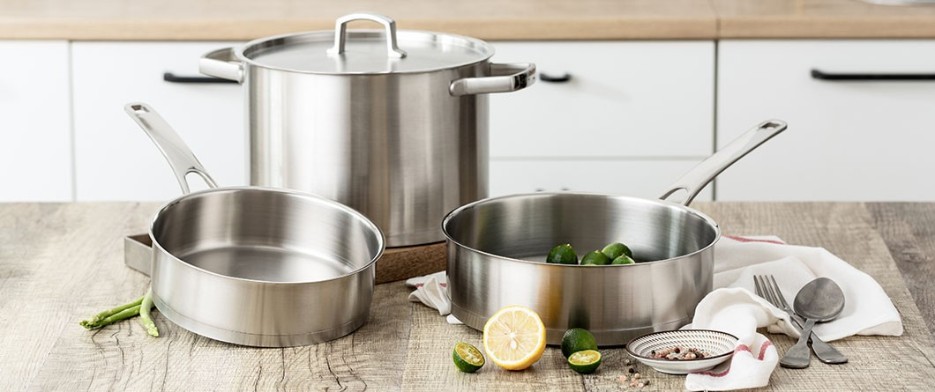Top 5 Frequent Mistakes in Cleaning Stainless Steel Pots – Learn How to Avoid Them
Stainless steel pots are a popular choice in kitchens due to their durability and elegant appearance. However, many of us don’t know the proper way to clean stainless steel and end up making mistakes that cause scratches, stains, or loss of shine. Incorrect cleaning can affect not only the look but also the longevity of the cookware.
Below are the most common mistakes when cleaning stainless steel pots:
1. Using Abrasive Sponges or Hard Brushes
One of the most frequent mistakes is using abrasive sponges or hard brushes to clean stainless steel pots. Although it seems that this quickly removes dirt, it actually creates fine scratches over time, ruining the pot’s appearance and trapping residues that are hard to remove. Stainless steel does not require aggressive scrubbing to clean effectively.
Tip: Opt for soft sponges, microfiber cloths, and gentle, non-abrasive cleaners. Special stainless steel sponges remove dirt without damaging the surface. For burnt or stubborn stains, soak the pot in warm, soapy water rather than scrubbing forcefully.
2. Using Strong Chemical Cleaners
Another frequent mistake is using harsh chemicals such as bleach, chlorine-based products, or industrial cleaners. While these promise quick results, they can damage the stainless steel’s protective layer, causing loss of shine, staining, and even corrosion over time.
Tip: Use natural, readily available options: diluted vinegar, lemon juice with baking soda, or a mild liquid detergent. For stubborn spots, soak the pot overnight in warm water mixed with one of these gentler solutions.
3. Leaving Pots Unwashed for Too Long
Delaying the washing of pots after use is an apparently harmless habit but very damaging to stainless steel. Food residues—especially acidic ones like tomato sauce, lemon juice, or vinegar—can stain or corrode the surface if left too long. Hardened grime also encourages aggressive cleaning methods.
Tip: Rinse pots with warm water as soon as possible after use. If yellowish stains appear, use a paste of baking soda and water or diluted vinegar.
4. Cleaning Pots While Still Hot
Running cold water or applying detergent to a hot stainless steel pot is a common mistake that can have unpleasant consequences. Sudden temperature changes cause thermal shock, which may warp the pot or weaken the metal. Cleaning a hot pot can also set stains—especially sugary or fatty residues—making them harder to remove.
Tip: Allow the pot to cool completely before washing. Use gentle solutions (warm water, mild detergent, or vinegar) that don’t require extreme temperatures for effectiveness.
5. Neglecting to Dry Pots After Washing
Although it may seem optional, drying stainless steel pots immediately after washing is essential to maintain their appearance. Air-drying on a rack can leave water spots or limescale marks, especially in hard-water areas. These blemishes dull the steel and are hard to remove later.
Tip: Wipe pots with a soft cloth right after rinsing. If spots form, remove them with white vinegar or a baking soda paste.
Additional Care Recommendations
- Avoid heating empty pots: Never heat stainless steel pots without liquid or food inside, as this can cause discoloration and stubborn stains.
- Use moderate heat: Stainless steel is not cast iron—avoid excessive temperatures to prevent warping and burning.
- Avoid thermal shock: Don’t run cold water over a hot pot; sudden temperature changes can damage it.
- Clean regularly but gently: Wash pots after each use with a soft sponge and mild detergent; avoid metal brushes or abrasive pads.
- Don’t salt a hot, empty pot: Add salt only after pouring in water to prevent corrosion from direct contact with the hot surface.
Proper care and knowledge of stainless steel cleaning make the difference between dull, damaged pots and ones that stay like new for years. Avoiding these common mistakes will keep your cookware shining and functional.


